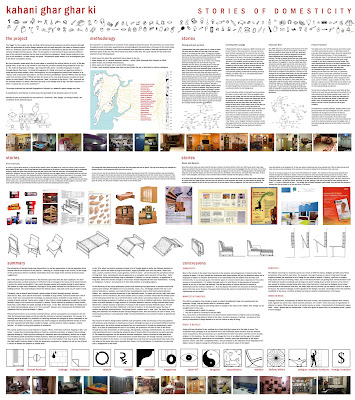Lined up 21 files tracing Correa's history in newspapers and magazines since 1962...
and more to be added to it soon.
Yeah, I wanted to mention here that how working on this project is so playful. I used to love solving puzzles when I was young - what comes first, what comes in the end, find the missing number, arrange in order, match the figures, find the differences...all that. That is exactly what I am doing here. Putting things in place, neatly, taking prints of matter, scanning and organizing into a system...guessing out page nos. from "continued at" and "continued from" - all that.
More than that, how it makes me delicate towards the material. That's fascinating. I love handling old paper - the yellowness due to its age, its smell, eroded surface, old signs/logos of newspapers, old typeface, sometimes a random advertisement along side an article makes you wonder what that time was and how people lived - it's interesting in all its dimensions for me to understand the historical aspect of archiving.
And in the end, the colourful tags that I remove from unwanted places make my table very colourful against the old furniture and the old papers. At the end of every day, I put back my stationery in that big round pencil holder created from some stupid unwanted empty spindle of rolled paper... it's interesting to see all pens and pencils self-organize themselves into its curvature.
More interesting things are when Correa talks about them - like he mentioned today about a newspaper called "Daily Telegrams" which used to be published only in Andaman. The reason why it was called a "Telegram" was because during those days, all news could only be sent to Andaman via a telegram. So the publishers would receive a couple of telegrams which would be published into a newspaper, daily. On the other hand, while I was just sorting out all the VHS tapes containing his interviews, etc, it's funny to have no more tapes after 1997, and it makes you realize the overtaking of computerised (digital technology) over TV - since then, one finds only CDs and later only DVDs...
(and on my way back, I thought of another idea, rather ideas, to be written upon, drawn about or recorded {audio/video}...where shall I get the people of my temperament to accomplish it? Lots of work to be done -
if the curved line on the palm is the measure of the life, then I want to scratch it right till my arm...hush...)





















